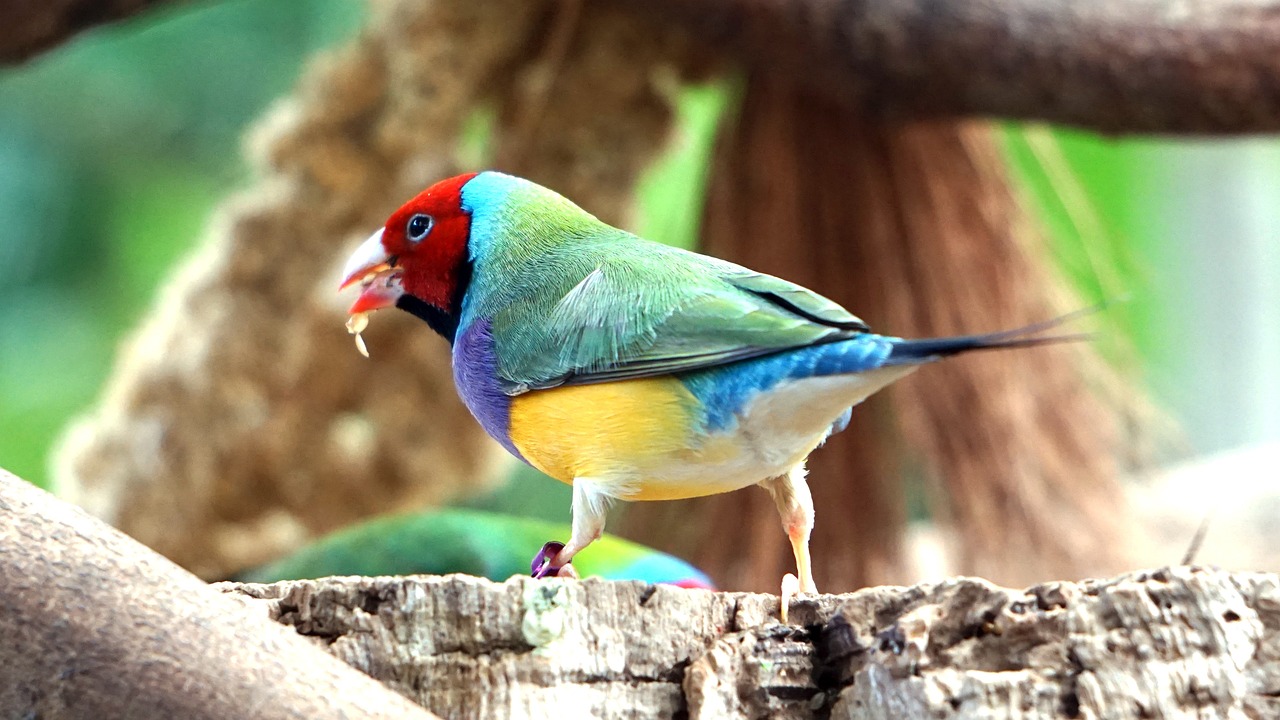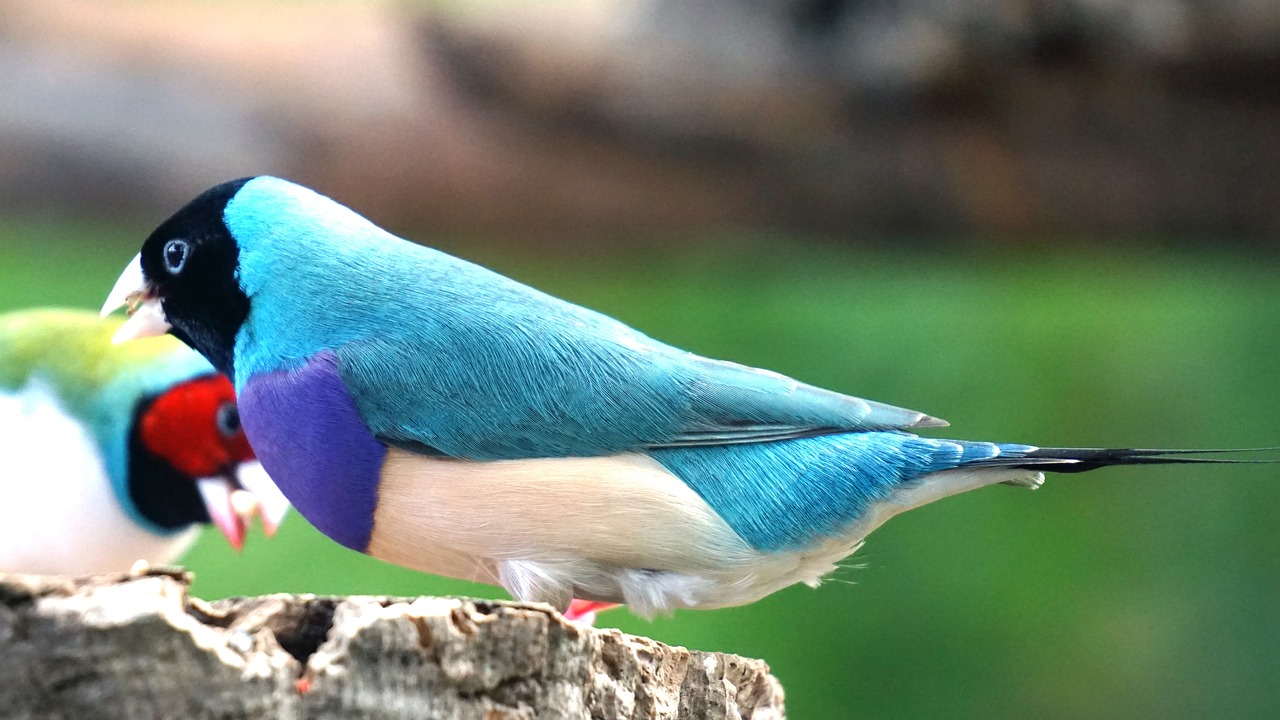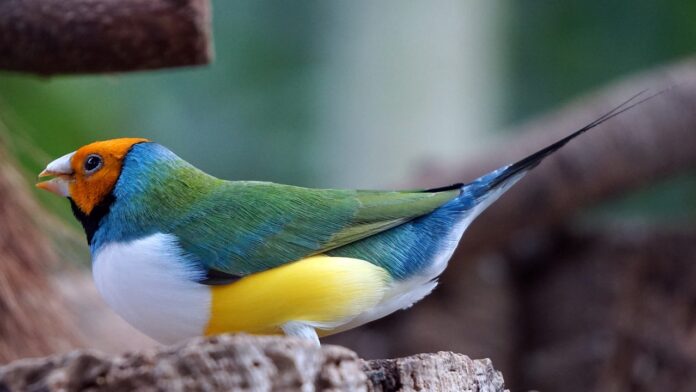On our vast planet, there are many incredibly beautiful birds that delight the human eye with their bright colors and soulful songs. Among them are the small and remarkable finches, songbirds from the family of weaver finches. In the wild, they can be found in Australia and Africa, and sometimes in South Asia.
In the wild, finches live quite unpretentiously — they are attracted to dense forest thickets and open areas. In captivity, they also adapt wonderfully and easily. Scientists have learned to breed them, using various crossbreeding techniques. Their efforts have been highly successful, resulting in sparrow-like finches that are astonishingly bright, multicolored, and charming decorative birds.
Globally, about thirty-eight species of these wonderful finches have been identified, with more than three hundred subspecies. Today, we will look at the rarest and most endangered of these beautiful birds — the “Lady Gouldian Finch” or Gouldian Finch.
Description
The Gouldian Finch became famous thanks to British zoologist John Gould, who described the birds in his works in 1844, after traveling through Australia. Later, as many ornithologists studied the small, colorful “parakeets,” they concluded that this species is the most vibrant among its relatives, sings the best, and has unique habits.
John Gould initially only noted birds with black heads, believing that those with other head colors were a different species. But it was later discovered that all finches, despite their different head colors, can interbreed and produce colorful offspring.
The most common Gouldian Finches have black heads. There are fewer red-headed finches, but they have a special advantage. These birds could be considered the “elite” of the species, as other birds are instinctively afraid of red and avoid the “fierce” red-headed finches.
The winners get the best food and the most comfortable spots in trees. There are also finches with yellow heads, which are an extremely rare variety. Seeing such a “natural wonder” in the wild is nearly impossible — they are more likely to be found in human-made aviaries. The length of these amazing little birds from head to tail is 13-15 cm.
Besides their specific head color, all Gouldian Finches have a light blue stripe around their necks and on the back of their heads, which gradually blends into a light green covering on their backs. Their chests are mainly bright purple or white, clearly separated from their yellow bellies. The tips of their tail feathers complete their “outfit” with a blue tone that matches the neck. Their eyes are dark brown, beautifully accented by rings of sky blue.
The appearance of this “beauty” brings joy to everyone and showcases the wild creativity of nature. Unfortunately, only males display such vibrant colors, while females are more modest and pale. This distinction between the sexes has a special purpose — the bright plumage of the males attracts females during courtship displays. Additionally, their vivid colors help distract predators from the more camouflaged females who are nesting.
Habitat
Gouldian Finches prefer hot and humid climates, which is why they inhabit the northern part of Australia. In summer, the air there can reach 45°C, while maintaining high humidity. They typically build their nests near bodies of water, where they can play in the water and find plenty of food. These colorful birds are not bothered by the scorching sun, which forces other creatures into the shade, and they welcome heavy rains.
When the rainy season ends and the plant life begins to dry up, finches migrate to areas where the rains continue, ensuring their survival through the presence of water. In places with infrequent rainfall, they may not appear for many years. When finches migrate in flocks, the sky unfolds like a multicolored rainbow. The collective flight of these amazing birds creates the impression of a divine painting in the sky.
They are not particularly choosy about where they nest — tree hollows or abandoned nests suit them just fine. Sometimes, some industrious birds try to build their own homes in grass or bushes, but their building skills are poor, and the nests often end up incomplete, useless for raising chicks or protecting them from predators.
Interesting Facts
- English ornithologist John Gould was so enchanted by the beauty of these colorful birds that after discovering them in Australia, he named them after his wife, Elizabeth, calling them “Lady Gouldian Finch.” Having seen thousands of different birds in his life, he chose this species as a gift for his beloved, who always accompanied him on his travels and helped him draw them.
- The Gouldian Finch is a polymorphic species. In other words, these extraordinary birds can change throughout their lives. In nature, such species are found among some insects and spotted lizards.
- Ornithologists have discovered an interesting phenomenon — the head color of Gouldian Finches expresses their character and behavior. Black-headed finches are smart and brave, red-headed ones are aggressive fighters, and yellow-headed ones are mysterious and submissive.
- There is a fourth variety of mutated finches, bred by humans through crossbreeding. This rarest bird is completely colored in delicate blue hues.
- Due to their incredible beauty, Gouldian Finches are very popular in zoos. Estimates show that there are over 100,000 of these birds bred and living in captivity on the Australian continent alone. In the wild, however, their population numbers only around 2,500 individuals.
- Finches are classified in the family of songbirds due to their natural ability to build nests from long blades of grass, separating the fibers and moistening them with their saliva.
- The behavior of these cheerful birds can sometimes be harsh. If the rainy season ends and their usual food supply runs out, they will fly off in search of a better life, leaving behind nests with eggs, or sometimes even already hatched chicks.
- Gouldian Finches cannot tolerate low temperatures or drafts. Therefore, keeping them at home is difficult — the birds are picky and delicate. The temperature must always be maintained between 24 and 32°C.
- Their beaks are thick, curved, and almost transparent, giving the impression that they are made of wax. For this reason, they are often called “waxbills.”
- Gouldian Finches belong to the family of songbirds, although their sounds are more like chirping, bubbling, hissing, and whistling than the melodic singing of a nightingale. However, only the females worry about this lack of song. During the mating season, males can produce such melodic trills that they melt the hearts of all females nearby.
